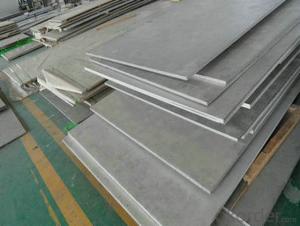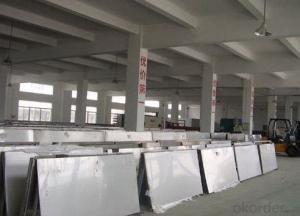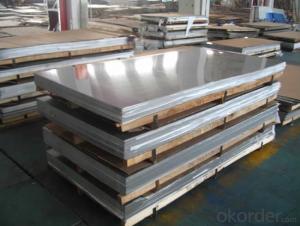Stainless Steel sheet 304 with 4MM Thickness and Made In China
- Loading Port:
- Shanghai
- Payment Terms:
- TT OR LC
- Min Order Qty:
- 10000 m.t.
- Supply Capability:
- 5000000 m.t./month
OKorder Service Pledge
OKorder Financial Service
You Might Also Like
Hot sale stainless steel sheet 201/202/304/304l/316/316l/430 in china alibaba
Description of Stainless Steel Sheet:
Description | steel sheet,hot rolled steel sheet,cold rolled steel sheet, steel sheet,sheet,steel plate |
Standard | ASME, ASTM, EN ,BS,GB,DIN, JIS etc |
Application | Steel sheet applies to construction field, ships building industry, petroleum & chemical industries, war and electricity industries, food processing and medical industry, boiler heat exchanger, machinery and hardware fields. |
Packaging | Standard export sea-worthy packing |
Delivery time | 10-30 days |
Quality | No.1 |
Productivity | 500 tons/Day |
Note | Our company has cooperative relation between the domestic agents. Stainless steel sheet can be made accordingto the customers requirements. Fasten delivery. Quality assured. |
Contacts | If you have any question,please feel free contact me. |
Stainless steel sheet surface finish characteristics
Surface finish | Characteristics and application |
2B | The surface brightness and flatness of no2B is better than no2D. then through a special surface treatment to improve its mechanical properties,No2B could nearly satisfy comprehensive uses. |
No.1 | Polished with abrasive belt of grit#100-#200, have better brightness with discontinuous coarse stria, used as inner and external ornaments for building, electrical appliances and kitchen utensils etc. |
No.4 | Polished with abrasive belt of grit #150-#180,have better brightness with discontinuous coarse stria, but thinner than No3, are used as bathtub buildings inner and external ornaments electrical appliances kitchen utensils and food processing equipment etc. |
HL | Polished with abrasive belt of grit #150-#320 on the NO.4 finish and has continuous streaks, mainly used as buildings ornaments elevators, door of building, frontal plate etc. |
BA | Cold rolled, bright annealed and skin-passed, the product have excellent brightness and good reflexivity like mirror, kitchen apparatus, ornament etc. |
8K | The product have excellent brightness and prefer reflexivity can to be the mirror. |
Main Features of stainless steel sheet :
•Escalator, Elevator, Doors
•Furniture
•Production tools, Kitchen appliances, freezers, cold rooms
•Auto Parts
•Machinery and Packaging
•Equipment and Medical devices
•Transport system
Product Details:
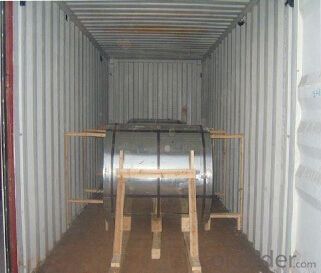
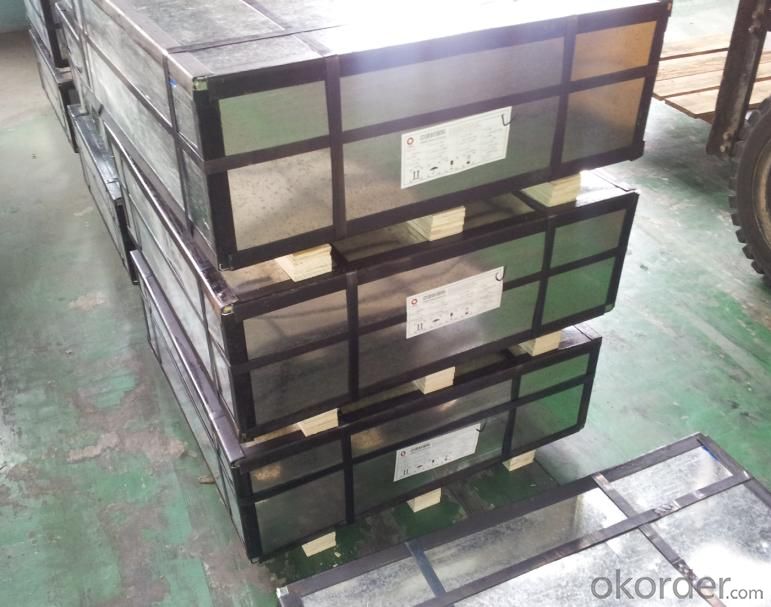
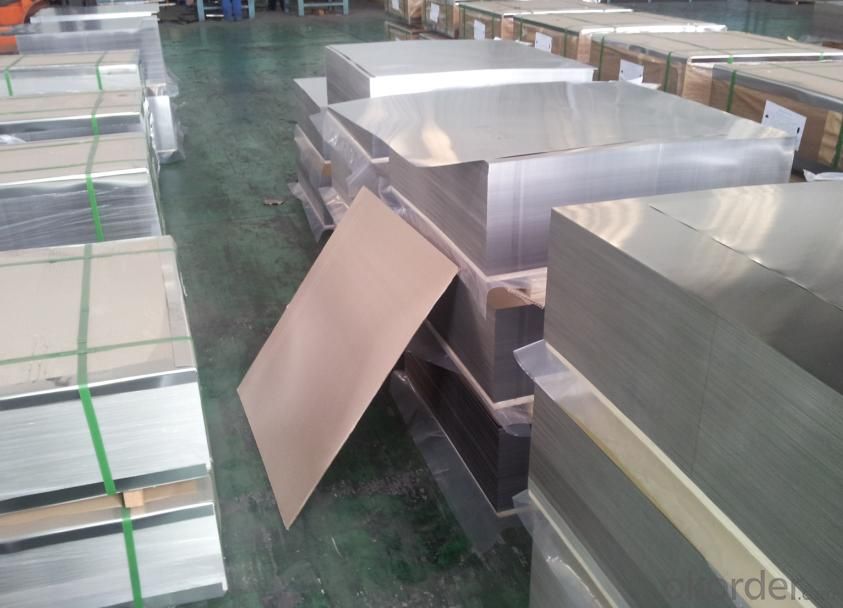
Sandard Seaworth Packing(wooden packing with water proof paper)
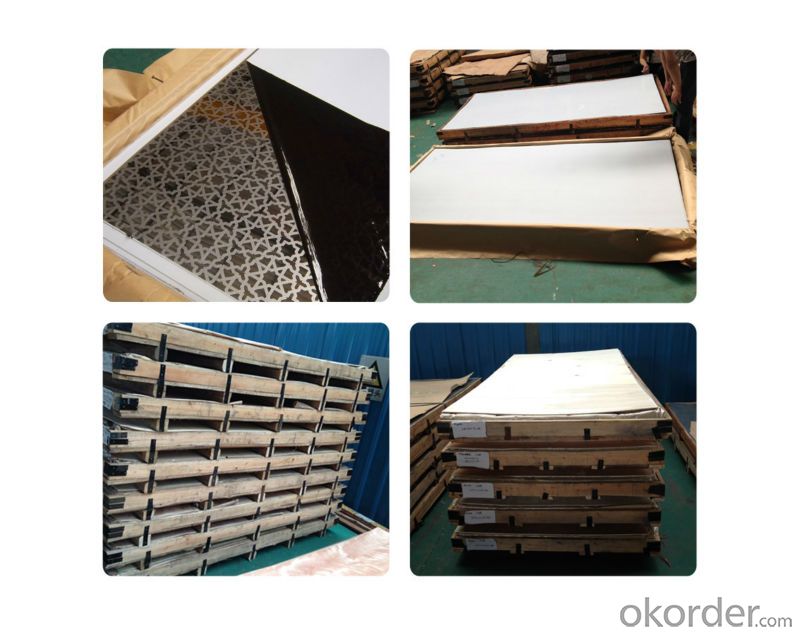
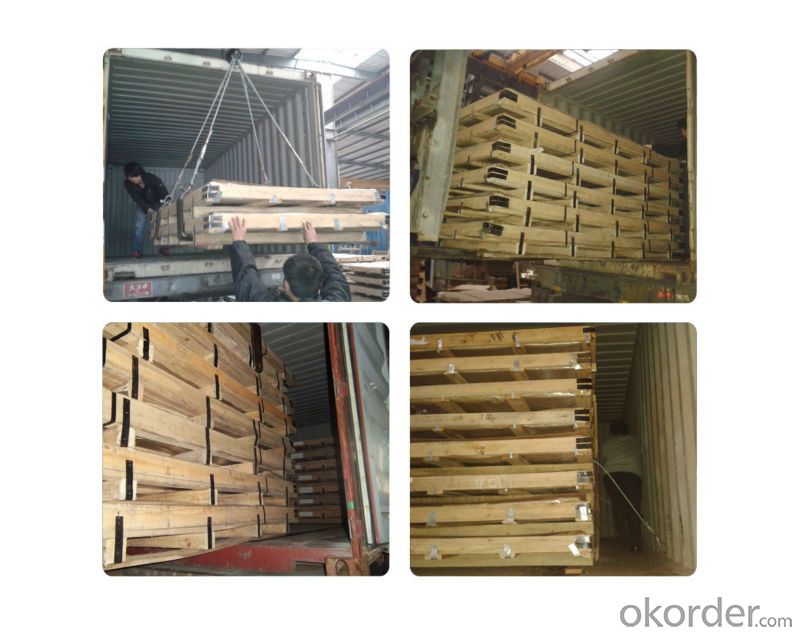
FAQ:
1. What's the quality?
very fine
2. How long get reply?
within 24 hours
If you have any question about stainless steel sheets,donot forget to sending the email to Us! You will get the competitive Price and have a very good experience about the Buying Process! CNBM International Corporation is always your trustful friend!
- Q:Can stainless steel sheets be used for chemical reactors?
- Yes, stainless steel sheets can be used for chemical reactors. Stainless steel is highly resistant to corrosion, making it suitable for handling various chemicals and reactive substances. Additionally, it offers excellent heat resistance and durability, making it a popular choice for constructing chemical reactors in industries such as pharmaceuticals, petrochemicals, and food processing.
- Q:Can stainless steel sheets be used for elevator mirrors?
- Certainly! Elevator mirrors can indeed be made using stainless steel sheets. Stainless steel, being both durable and versatile, is a favored material for elevator interiors due to its sleek and polished look. By polishing stainless steel sheets to a mirror-like finish, they can be effectively utilized as reflective surfaces for elevator mirrors. Furthermore, stainless steel's resistance to corrosion makes it well-suited for the humid and frequently challenging conditions typically encountered in elevators.
- Q:Can stainless steel sheets be used for storage tanks?
- Indeed, storage tanks can absolutely utilize stainless steel sheets. Stainless steel possesses a remarkable level of resistance to corrosion, rendering it an excellent material for the storage of a wide range of substances, such as chemicals, liquids, and gases. Its exceptional durability guarantees an extended lifespan for the storage tank, thereby minimizing the likelihood of leaks or contamination. Moreover, stainless steel tanks are effortless to clean and maintain, making them particularly suitable for industries like food and beverage, pharmaceuticals, and wastewater treatment. Furthermore, stainless steel is non-reactive, meaning it does not react with the stored substances, thus ensuring the integrity and quality of the materials being stored. All in all, stainless steel sheets serve as a dependable and versatile option for storage tank applications.
- Q:What are the different types of stainless steel sheet patterns?
- There are several different types of stainless steel sheet patterns available. Some of the most common patterns include: 1. Plain or smooth pattern: This is the most basic and simple pattern, with a smooth and flat surface. 2. Diamond pattern: Also known as tread plate or checker plate, this pattern features raised diamond-shaped ridges, providing excellent slip resistance. 3. Tear drop pattern: Similar to the diamond pattern, this pattern features raised teardrop-shaped ridges, offering enhanced slip resistance. 4. Linen pattern: This pattern resembles the texture of linen fabric, with a series of parallel lines intersected by a crisscross pattern. 5. Quilted pattern: This pattern resembles a quilted fabric, with a diamond-shaped or square-shaped design. 6. Hammered pattern: This pattern has a textured surface that resembles the marks left by a hammer, adding visual interest and dimension. 7. Perforated pattern: This pattern features small holes or perforations in the sheet, allowing for improved ventilation and drainage in certain applications. These are just a few examples of the various stainless steel sheet patterns available. Different patterns offer different aesthetic and functional benefits, allowing for greater versatility in design and application.
- Q:What is the tensile strength of stainless steel sheets?
- The tensile strength of stainless steel sheets can vary depending on the specific grade and thickness of the material. Generally, stainless steel sheets exhibit a higher tensile strength in comparison to other materials. For instance, stainless steel sheets like the commonly used 304 and 316 grades typically possess tensile strengths ranging from 515 to 690 megapascals (MPa) or 74,800 to 100,000 pounds per square inch (psi). However, it is crucial to note that the tensile strength values may differ for various grades and thicknesses of stainless steel sheets. It is always advisable to seek precise information regarding the tensile strength of specific stainless steel sheets from the manufacturer or supplier.
- Q:What are the different types of stainless steel sheet finishes for industrial applications?
- There are several different types of stainless steel sheet finishes that are commonly used in industrial applications. These finishes are designed to provide different levels of durability, corrosion resistance, and aesthetics. 1. No. 1 Finish: This is a hot-rolled, annealed, and pickled finish that is characterized by a dull, rough surface. It is commonly used in applications where a smooth surface is not required, such as structural components or where appearance is not a major concern. 2. No. 2B Finish: This is a smooth, moderately reflective finish that is achieved by cold rolling, annealing, and pickling. It is commonly used for applications that require a good balance between corrosion resistance and appearance, such as kitchen appliances, architectural components, and food processing equipment. 3. No. 4 Finish: This is a brushed finish that is achieved by polishing with abrasive belts or brushes. It has a matte appearance and is often used in applications where a decorative finish is desired, such as furniture, elevator panels, and signage. 4. No. 8 Finish: Also known as mirror finish, this is the most reflective finish available for stainless steel sheets. It is achieved by polishing with progressively finer abrasives until a highly reflective surface is obtained. This finish is commonly used in applications where a high level of reflectivity and a decorative appearance are desired, such as architectural accents, automotive trims, and decorative items. 5. BA Finish: This is a bright annealed finish that is achieved by annealing in a controlled atmosphere furnace. It has a smooth, highly reflective surface and is commonly used in applications where a mirror-like finish is desired, such as decorative items, reflectors, and light fixtures. These are just a few of the most common stainless steel sheet finishes used in industrial applications. Each finish has its own unique properties and is suitable for different purposes, so it is important to carefully consider the requirements of the specific application when selecting a finish.
- Q:How do you prevent pitting corrosion on stainless steel sheets?
- There are several measures that can be taken to prevent pitting corrosion on stainless steel sheets: 1. It is crucial to select the proper alloy. Choosing a stainless steel grade with high resistance to corrosion, such as 316 or 904L, is essential. 2. Passivation is necessary after fabrication. This process involves treating the sheets with an acid solution, rinsing thoroughly, and drying. It helps restore the protective chromium oxide layer on the surface, enhancing corrosion resistance. 3. Regular cleaning and maintenance are important. Stainless steel sheets should be cleaned regularly using mild soap, water, and a soft cloth or sponge. Harsh cleaners should be avoided. 4. It is crucial to avoid exposure to aggressive environments. Stainless steel sheets should be protected from chemicals, chlorides, acids, and other corrosive substances. If exposure is unavoidable, protective coatings or barriers should be used. 5. Stagnant or low-flow conditions should be avoided. Pitting corrosion is accelerated in such conditions where oxygen levels are depleted. Proper ventilation and circulation of air or fluids can prevent pitting corrosion. 6. Regular inspection and maintenance are necessary. Periodic visual inspection helps identify early signs of pitting corrosion. Immediate action should be taken to address any pitting, such as applying a suitable corrosion inhibitor or protective coating. By following these preventive measures, the risk of pitting corrosion on stainless steel sheets can be minimized, ensuring their long-term durability and performance.
- Q:What are the costs of stainless steel sheets compared to other materials?
- Several factors contribute to the variation in costs for stainless steel sheets, including the grade, thickness, size, and finish of the sheets. Stainless steel sheets generally have a higher price point compared to materials like aluminum or mild steel, primarily due to the higher production costs and the unique properties of stainless steel. Stainless steel is renowned for its corrosion resistance, durability, and aesthetic appeal, making it a popular option in industries such as construction, automotive, and manufacturing. However, these desirable qualities come at a higher cost. In comparison to aluminum sheets, stainless steel sheets are typically more expensive. Although aluminum is lightweight and offers good corrosion resistance, it lacks the strength and durability of stainless steel. Therefore, applications that require strength and longevity often favor stainless steel. Similarly, stainless steel sheets are pricier than mild steel. Mild steel is commonly used due to its affordability, but it lacks the corrosion resistance and aesthetic appeal of stainless steel. In applications where exposure to moisture, chemicals, or harsh environments is a concern, stainless steel is often preferred. When evaluating the costs of stainless steel sheets, it is crucial to consider the specific requirements of the project. While stainless steel may have a higher upfront cost, its long-term benefits, such as reduced maintenance and replacement costs, can outweigh the initial investment. Moreover, the unique properties of stainless steel may make it the only feasible choice for certain applications, further justifying its higher price.
- Q:What are the different types of stainless steel sheet surface textures for decorative purposes?
- For decorative purposes, there exist various surface textures for stainless steel sheets. These textures serve to enhance the overall aesthetic appeal of the stainless steel sheet and make it suitable for a variety of applications. Here are some examples of the different types of surface textures available: 1. Brushed Finish: This texture is achieved by rubbing the stainless steel sheet surface with a fine abrasive material, resulting in a smooth and subtle appearance similar to satin. The brushed finish is popular for its pleasing texture, making it suitable for various decorative applications. 2. Mirror Finish: Also known as a highly reflective finish, the mirror finish is achieved by polishing the stainless steel sheet surface to a high gloss. This texture creates a mirror-like reflection and is often used in decorative applications where a sleek and modern appearance is desired. 3. Bead Blast Finish: This texture is created by blasting the stainless steel sheet surface with small glass beads, resulting in a matte and textured appearance. The bead blast finish is commonly used in decorative applications where a non-reflective and textured surface is desired. 4. Embossed Finish: This texture involves creating patterns or designs on the stainless steel sheet surface by stamping or pressing it with a patterned roller or plate. Embossed finishes can vary in pattern and depth, adding a visually appealing and tactile element to the stainless steel sheet. 5. Etched Finish: This texture is achieved by chemically etching the stainless steel sheet surface with an acid or other corrosive substances. Etched finishes can create various designs, patterns, or even images on the surface, making it ideal for decorative applications where intricate detailing is required. 6. Hairline Finish: This texture is created by mechanically polishing the stainless steel sheet surface with fine abrasive belts or brushes, resulting in a narrow and uniform textured pattern. Hairline finishes are commonly used in decorative applications where a subtle and elegant appearance is desired. These examples represent only a fraction of the numerous stainless steel sheet surface textures available for decorative purposes. Each texture offers a distinct visual and tactile quality, providing a wide range of design options when utilizing stainless steel sheets for decorative applications.
- Q:Can stainless steel sheets be used for fire escapes?
- Yes, stainless steel sheets can be used for fire escapes. Stainless steel is known for its high strength, corrosion resistance, and durability, making it suitable for fire escape applications. It can withstand high temperatures and is not easily affected by fire or heat, ensuring the safety and reliability of fire escapes.
1. Manufacturer Overview |
|
|---|---|
| Location | |
| Year Established | |
| Annual Output Value | |
| Main Markets | |
| Company Certifications | |
2. Manufacturer Certificates |
|
|---|---|
| a) Certification Name | |
| Range | |
| Reference | |
| Validity Period | |
3. Manufacturer Capability |
|
|---|---|
| a)Trade Capacity | |
| Nearest Port | |
| Export Percentage | |
| No.of Employees in Trade Department | |
| Language Spoken: | |
| b)Factory Information | |
| Factory Size: | |
| No. of Production Lines | |
| Contract Manufacturing | |
| Product Price Range | |
Send your message to us
Stainless Steel sheet 304 with 4MM Thickness and Made In China
- Loading Port:
- Shanghai
- Payment Terms:
- TT OR LC
- Min Order Qty:
- 10000 m.t.
- Supply Capability:
- 5000000 m.t./month
OKorder Service Pledge
OKorder Financial Service
Similar products
New products
Hot products
Hot Searches
Related keywords
